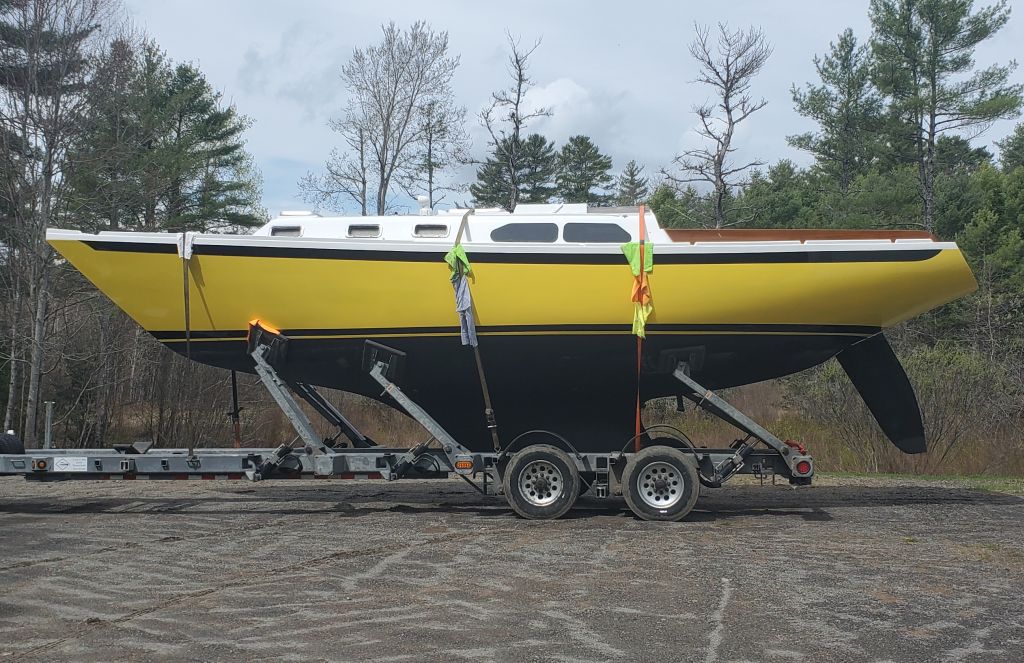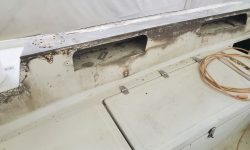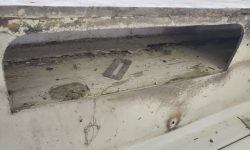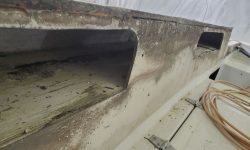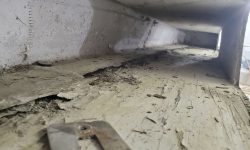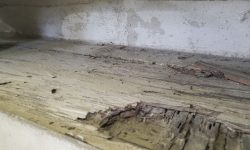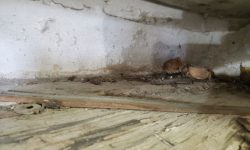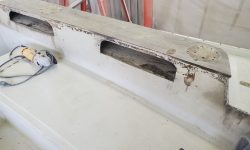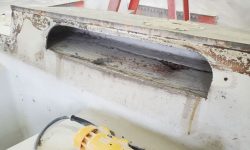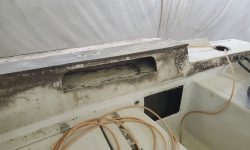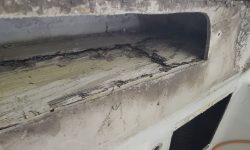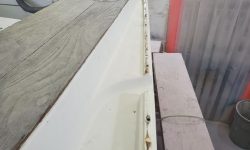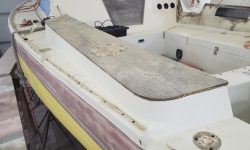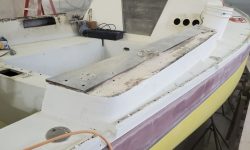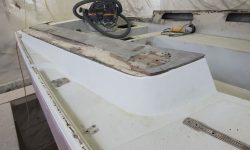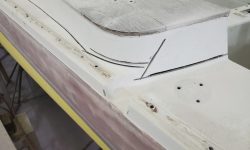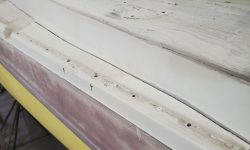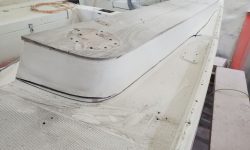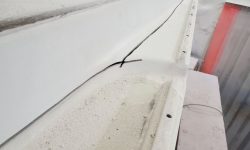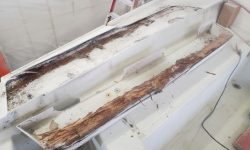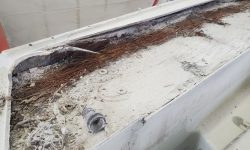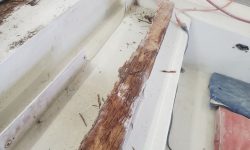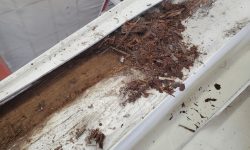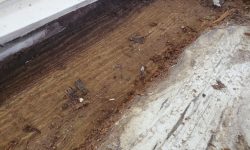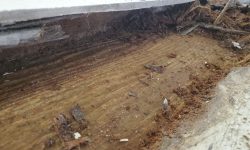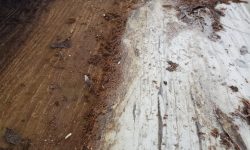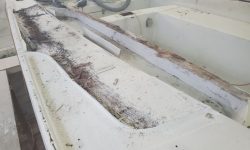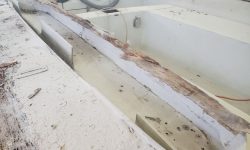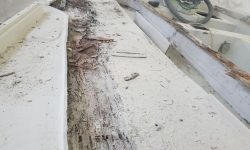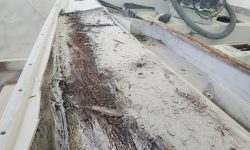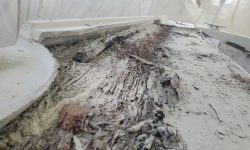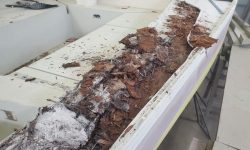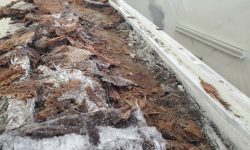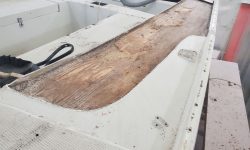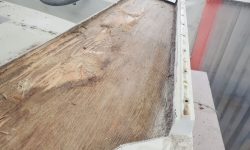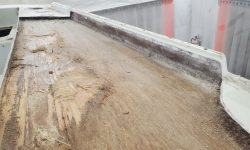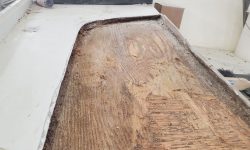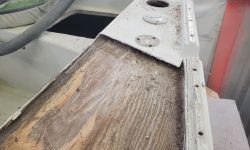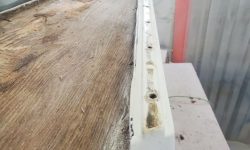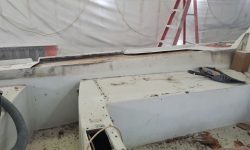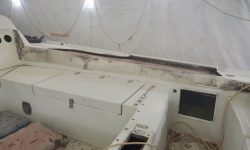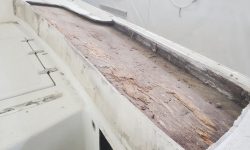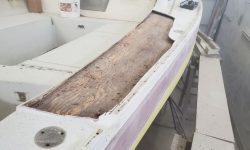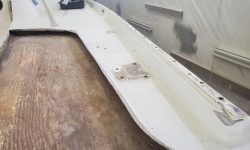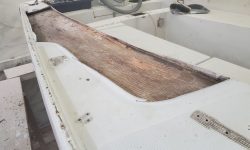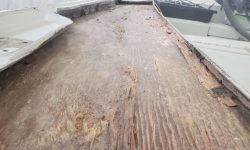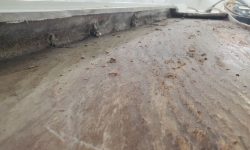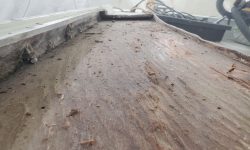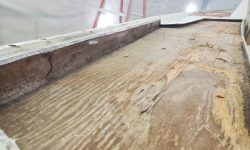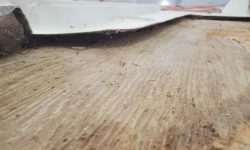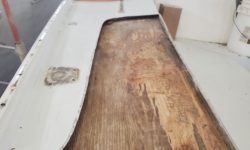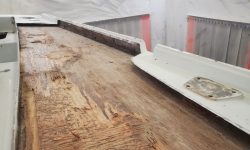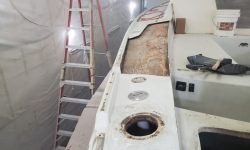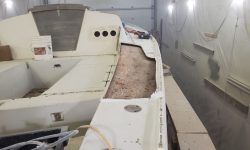January 4, 2023
Further 17
Wednesday
I was out in the world on other business during the morning, but that gave me a chance to pick up a few more angle brackets so I could finish securing the staging planks, which was my first task upon arrival at the shop.
Afterwards, I spent the remainder of the short afternoon on the winch islands. The owners chose to have me remove the molded winch islands entirely, since the wooden floors inside the cubbies were badly rotted and poorly-designed, and they decided they’d prefer external bronze winch stands and a cleaner, simpler appearance while at the same time addressing what would otherwise be a difficult repair. I had no idea what removing the winch islands might reveal, but now was the time to find out. The owners had already removed the winches, hardware, and coamings, leaving behind only the molded islands and some of the teak cap.
It was apparent from brief inspection that I could remove the molded islands rather quickly with a grinder and cutoff wheel, and this proved to be the case. I started on the port side, and cut near the bottom of the islands on both ends, and along the raised portion near the scuppers in between, staying far enough away from the toerail and molded T-track support to allow me to trim this more accurately later. On the inboard side, I cut between the cubby openings to release the entire island in one piece, revealing the rotten plywood floor within. The plywood was rotted nearly to dust along the outboard edges, which were “downhill” and had collected water over the years, and this material came out almost on its own.
I repeated the basic removal process on the starboard side. I cut a bit closer to the toerail here, since now I knew what I’d find beneath. (On the port side, I had already trimmed the original cut closer to the proper ending point once I’d removed the island itself and could see what was going on inside.)
Once I had the loosest material cleaned out, I chiseled out the remaining plywood; where it was still sound and stuck, it was stuck well, but it didn’t take too much effort to remove most of the remainder from both sides, with only some light residue left to clean up. The basic construction was this: The plywood floor was essentially uncovered core material, adhered to a full inner skin beneath and extending beneath the decks on either end. This was good news in that removing the islands and plywood didn’t leave large holes in the deck, but less good in that the plywood extended forward and aft beneath the adjacent top deck skins, so the water had had unfettered access from the unprotected winch island cubbies to the still-hidden core on each end. I already knew the core in the small after deck sections needed work, as this was visible through some deck plate openings on both sides, but how far–and to what extent–the damage extended forward remained to be seen. I’d have to inspect and open the decks forward of the winch islands’ locations to determine this. In the meantime, I cleaned out all the old plywood from the exposed areas, and beneath the lips to the extent possible, leaving further investigations for next time.
Total time billed on this job today: 2.5 hours
0600 Weather Observation: 35°, cloudy, drizzle, dew point 34°. Forecast for the day: Cloudy, chance of rain in the afternoon, 40°


